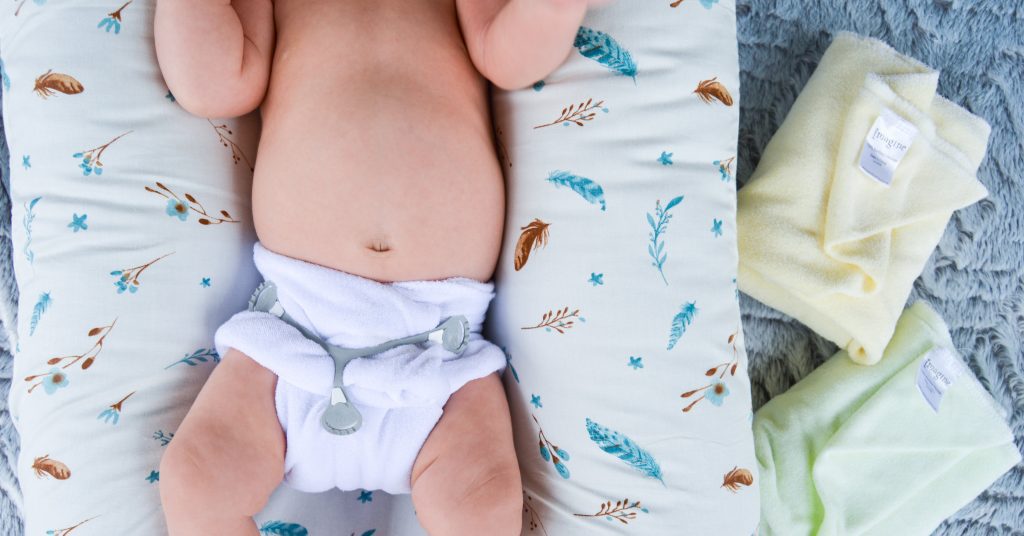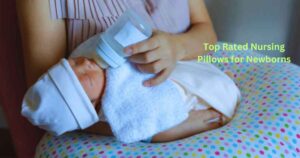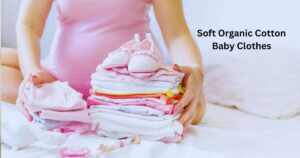Yes, you can cloth diaper a newborn. Many parents find it economical and eco-friendly.
Cloth diapering a newborn offers many benefits. It reduces waste and saves money over time. Modern cloth diapers are easy to use and come in various styles. They are gentle on your baby’s sensitive skin, preventing rashes and irritation. Parents can choose from different materials and designs to fit their needs.
Cloth diapers also promote early potty training. They are washable and reusable, making them a sustainable choice. Many brands offer adjustable sizes, ensuring a good fit as your baby grows. With proper care, cloth diapers can last through multiple children, providing long-term savings. For new parents, cloth diapering can be a practical and eco-conscious option.

Credit: m.youtube.com
Why Choose Cloth Diapers
Choosing cloth diapers for your newborn can seem overwhelming. Yet, many parents find them beneficial. They offer advantages that disposable diapers cannot match.
Environmental Benefits
Cloth diapers help reduce waste. Disposable diapers can take hundreds of years to decompose. Using cloth diapers means fewer diapers in landfills. This choice is kinder to our planet.
Cloth diapers are reusable. One set can last through multiple children. This reduces the need for constant production. Less production means fewer resources used and less pollution.
Cost Savings
Cloth diapers can save families a lot of money. The initial cost is higher, but they pay off over time.
Here’s a simple cost comparison:
| Diaper Type | Initial Cost | Long-Term Cost |
|---|---|---|
| Disposable Diapers | $20-$30 per pack | $1,500-$2,000 per year |
| Cloth Diapers | $200-$500 for a full set | $200-$500 total |
With cloth diapers, there’s no need for constant purchases. You can also buy them second-hand. This reduces costs even more.
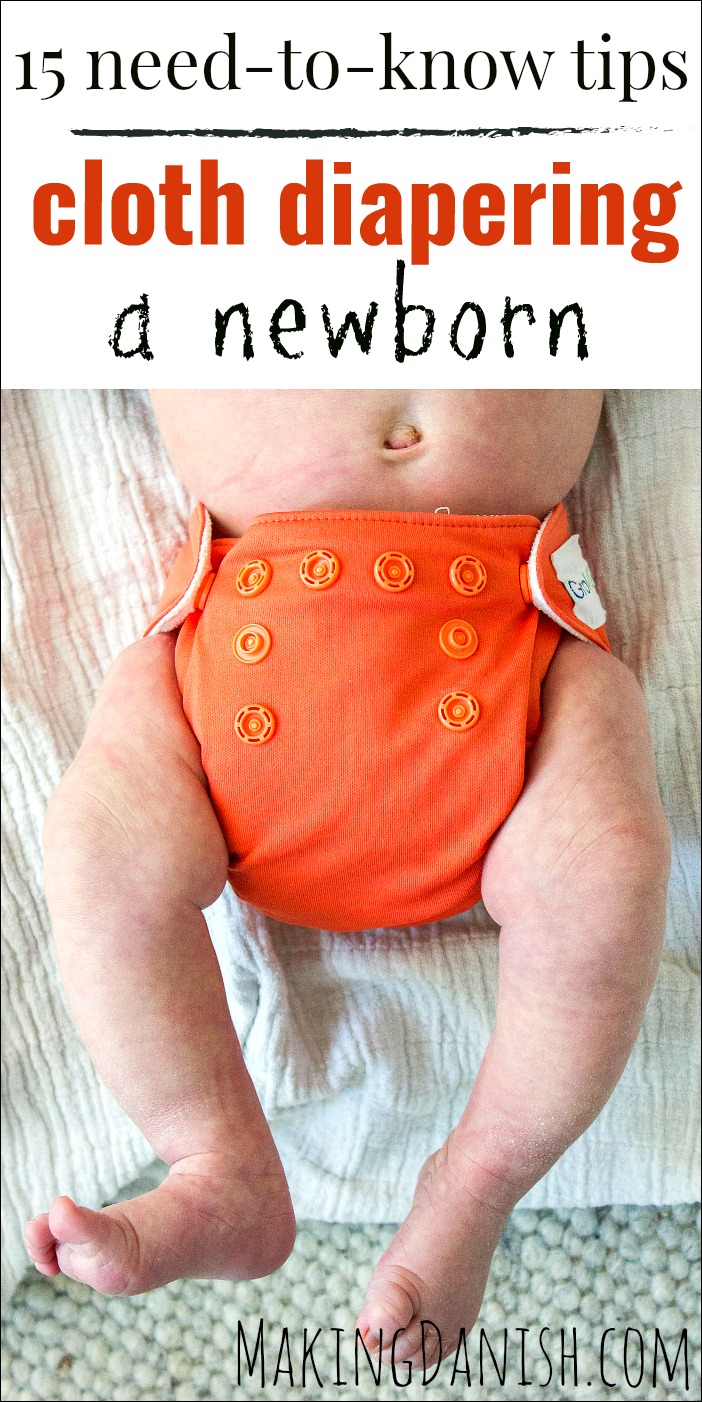
Credit: makingdanish.com
Types Of Cloth Diapers
Choosing the right cloth diaper for your newborn can be overwhelming. There are several types, each with its own benefits. In this section, we will explore three popular types: Prefolds, All-in-Ones, and Pocket Diapers.
Prefolds
Prefolds are the most traditional type of cloth diaper. They are simple and economical. These diapers consist of multiple layers of fabric sewn together. You need to use a cover to make them waterproof.
- Cost-effective
- Durable
- Requires a waterproof cover
Prefolds are great for newborns. They are also easy to wash and dry. Many parents love their simplicity and affordability.
All-in-ones
All-in-One (AIO) diapers are convenient and user-friendly. They combine an absorbent layer and a waterproof cover into one piece. No additional cover is needed.
- Easy to use
- No separate cover required
- Less bulky
AIOs are perfect for parents new to cloth diapering. They are as simple as disposable diapers. Just fasten and go!
Pocket Diapers
Pocket Diapers offer customization and flexibility. They have a waterproof outer layer and a pocket inside. You can insert absorbent pads into the pocket.
| Feature | Benefit |
|---|---|
| Customizable absorbency | Adjust the level of absorbency |
| Quick drying | Separate inserts dry faster |
| Reusable | Use different inserts for different needs |
Pocket diapers are a favorite among many parents. They offer the ability to customize absorbency based on your baby’s needs.
Getting The Right Fit
Getting the right fit for cloth diapers is crucial for newborns. It ensures comfort and prevents leaks. Let’s explore how to achieve the perfect fit for your baby.
Sizing Options
Newborns come in different shapes and sizes. Cloth diaper sizing options cater to these differences. Generally, you will find:
- Newborn Size: For babies weighing 6-12 lbs.
- One-Size Fits All: Adjustable for babies weighing 8-35 lbs.
Newborn sizes offer a snug fit but are outgrown quickly. One-size options grow with your baby, making them a cost-effective choice.
Adjustable Features
Cloth diapers come with adjustable features for a custom fit. These features include:
- Snap Closures: Allow for waist and leg adjustments.
- Velcro Closures: Easy to adjust, similar to disposable diapers.
- Elastic Gussets: Provide a secure fit around the legs.
Here’s a quick comparison:
| Feature | Benefits |
|---|---|
| Snap Closures | Durable and customizable fit. |
| Velcro Closures | Quick and easy adjustments. |
| Elastic Gussets | Prevents leaks effectively. |
Using these features ensures your baby’s cloth diaper fits perfectly. This minimizes discomfort and maximizes leak protection.
Essential Diaper Accessories
Cloth diapering a newborn can be rewarding and eco-friendly. To make it work, you need some essential accessories. These tools ensure convenience and hygiene. Let’s dive into the must-have diaper accessories.
Diaper Covers
Diaper covers are vital for cloth diapering. They help keep the wetness inside. You can choose from a variety of materials like PUL, fleece, or wool. Each material has its benefits. PUL covers are waterproof and easy to clean. Fleece covers are breathable and soft. Wool covers are natural and great for sensitive skin. Have at least 6-8 covers on hand.
Wet Bags
Wet bags store soiled diapers until wash day. They come in different sizes and styles. Use small wet bags for outings. Large wet bags are perfect for home storage. Wet bags are made from waterproof materials. They prevent leaks and contain odors. Have at least two large and two small wet bags.
Liners
Liners make clean-up easier. They catch solid waste and protect the diaper. There are two types: disposable and reusable. Disposable liners are convenient for travel. Reusable liners are eco-friendly and cost-effective. Choose the type that fits your lifestyle. Keep a good stock of liners for convenience.
| Accessory | Purpose | Recommended Quantity |
|---|---|---|
| Diaper Covers | Contain wetness and mess | 6-8 |
| Wet Bags | Store soiled diapers | 4 (2 large, 2 small) |
| Liners | Catch solid waste | Varies (keep a good stock) |
These essential diaper accessories make cloth diapering easier. They ensure your newborn stays comfortable and dry.
Washing And Care
Washing and caring for cloth diapers is essential for your newborn’s comfort. Understanding the right methods ensures diapers stay clean and last longer. Here’s a detailed guide to help you navigate the process.
Washing Routine
A consistent washing routine keeps your cloth diapers fresh and hygienic. Follow these steps:
- Pre-rinse: Start with a cold pre-rinse cycle to remove any solids.
- Main wash: Use a hot wash cycle with a cloth diaper-safe detergent.
- Extra rinse: Finish with an extra rinse to eliminate detergent residue.
Stain Removal Tips
Stains can be stubborn but manageable with the right techniques:
- Sunlight: Hang diapers in the sun. Sunlight naturally bleaches stains.
- Baking soda: Add baking soda to the wash cycle for tough stains.
- Lemon juice: Apply lemon juice to stains before washing for extra power.
Drying Methods
Proper drying ensures diapers remain effective and long-lasting. Consider these methods:
| Method | Advantages | Disadvantages |
|---|---|---|
| Air drying | Eco-friendly, gentle on fabric | Slow drying time, dependent on weather |
| Machine drying | Quick, convenient | May cause wear over time |
| Combination | Best of both methods | Requires more planning |
Dealing With Diaper Rash
Newborns have sensitive skin, making them prone to diaper rash. This can be a concern for parents using cloth diapers. But with the right care, you can prevent and treat diaper rash effectively.
Prevention Tips
- Change diapers frequently to keep the baby’s skin dry.
- Wash cloth diapers properly to remove all residues.
- Use a mild detergent free from fragrances and dyes.
- Rinse diapers thoroughly to ensure no soap remains.
- Give your baby diaper-free time each day to let the skin breathe.
Safe Rash Creams
Choose rash creams that are safe for cloth diapers. Many commercial creams can damage the fabric. Look for products with natural ingredients.
| Brand | Ingredients |
|---|---|
| Burt’s Bees Baby Bee | Shea Butter, Jojoba Oil, Zinc Oxide |
| Earth Mama | Olive Oil, Shea Butter, Calendula |
| GroVia Magic Stick | Beeswax, Jojoba Oil, Shea Butter |
Avoid creams with petroleum and fish oil. These can cause repelling issues with cloth diapers.
Traveling With Cloth Diapers
Traveling with cloth diapers can be a manageable and eco-friendly option. It requires a bit of planning, but it is entirely possible. With the right preparations, you can easily keep your baby comfortable and happy on the go.
Packing Essentials
Start with a checklist of must-have items to pack. Here are the basics:
- Enough cloth diapers to last the trip
- Wet bags for storing dirty diapers
- Diaper cream safe for cloth diapers
- Reusable wipes or cloth wipes
- Travel-sized cloth diaper detergent
Consider packing a few extra diapers in case of delays. Also, bring a small spray bottle with water or a diaper sprayer for rinsing. This makes cleaning easier while on the go.
Handling Dirty Diapers
Dealing with dirty diapers while traveling can seem challenging. But, with a system in place, it becomes straightforward.
First, use a wet bag to store soiled diapers. Wet bags are waterproof and contain odors well. They come in various sizes, perfect for day trips or longer travels.
Next, rinse solid waste if you have access to a bathroom. This helps reduce stains and odors. If you’re on a long trip, wash the diapers at your destination. Find local laundromats or use a portable washing machine.
Here’s a quick table to summarize handling dirty diapers:
| Step | Action |
|---|---|
| 1 | Store in wet bag |
| 2 | Rinse solid waste |
| 3 | Wash at destination |
Remember to pack your diaper detergent and check for laundromats ahead of time. With these steps, you can travel easily with cloth diapers.
Common Challenges And Solutions
Cloth diapering a newborn can be rewarding. It also brings challenges. Here are some common issues and practical solutions.
Leaks And Blowouts
Leaks and blowouts can be a common concern. The right fit is crucial.
- Ensure Proper Fit: Adjust the diaper snugly around the legs and waist.
- Use Inserts: Add extra inserts for better absorbency.
- Check Material: Choose high-quality, absorbent materials to minimize leaks.
Frequent changes also help prevent leaks. Change diapers every 2-3 hours or after each feeding.
Nighttime Diapering
Nighttime diapering can be tricky. Babies sleep longer at night.
- Use Overnight Diapers: These are more absorbent, designed for longer use.
- Double Up: Use two inserts for extra absorbency.
- Fleece Liners: Keep your baby dry and comfortable.
Keep a few extra diapers and wipes by the bed. This makes nighttime changes easier.
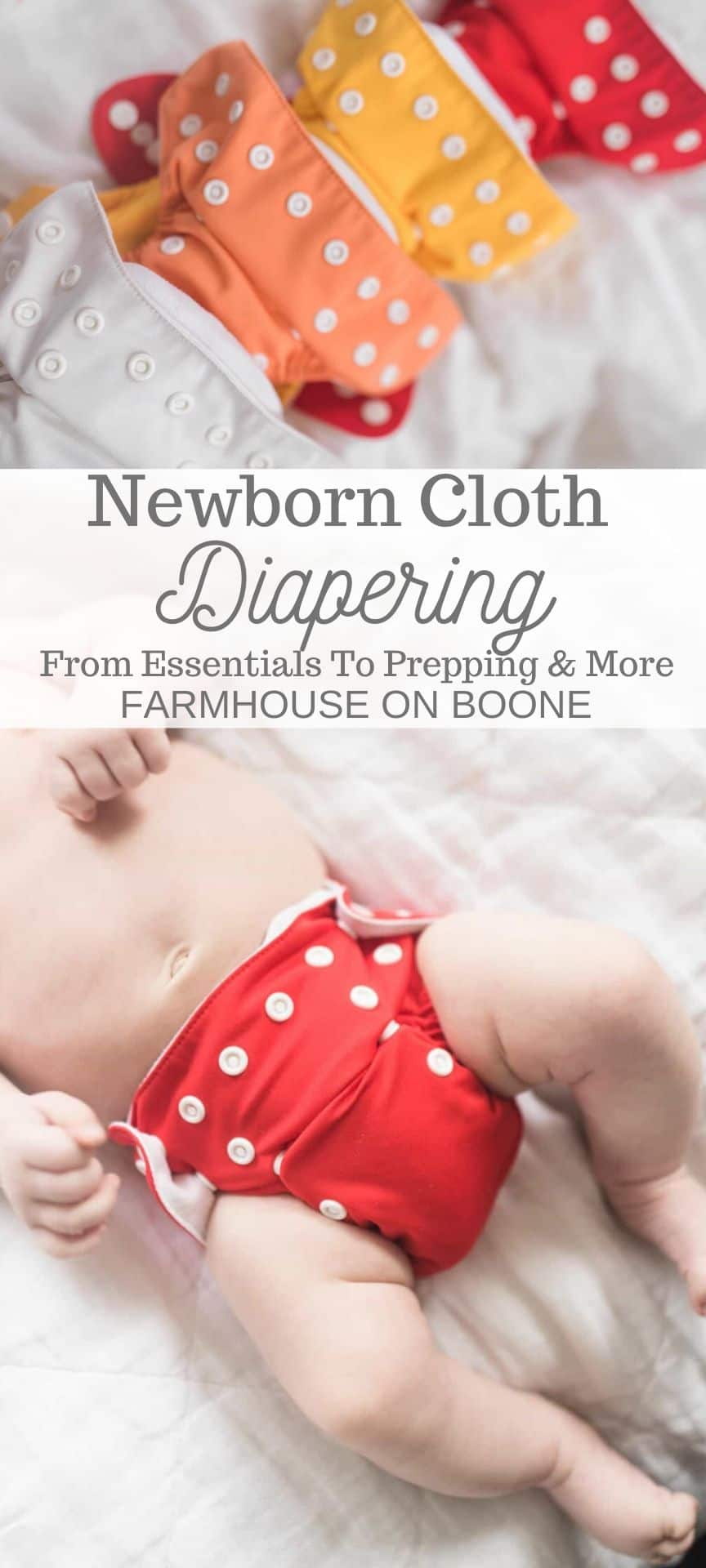
Credit: www.farmhouseonboone.com
Frequently Asked Questions
How Do You Cloth Diaper A Newborn?
To cloth diaper a newborn, choose the right size and type. Use newborn-specific cloth diapers for the best fit. Ensure frequent changing to maintain comfort.
What Are The Benefits Of Cloth Diapering Newborns?
Cloth diapers are eco-friendly and cost-effective. They reduce waste and are gentle on your baby’s skin. They can also be reused for future children.
How Often Should You Change Cloth Diapers?
Change cloth diapers every 2-3 hours. This prevents rashes and keeps your newborn comfortable. Always check for wetness and soiling.
Can Cloth Diapers Prevent Diaper Rash?
Yes, cloth diapers can help prevent diaper rash. They are breathable and less likely to irritate sensitive skin. Use a diaper-safe cream if needed.
Conclusion
Cloth diapering a newborn is both feasible and eco-friendly. It saves money and reduces waste. Remember to choose the right size and materials for comfort. With proper care and attention, cloth diapering can be a rewarding experience. Start your cloth diaper journey today for a healthier baby and planet.

